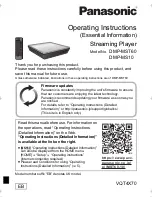
Chapter 9
Digital Routing and Clock Generation
©
National Instruments Corporation
9-9
Note that in a PXI chassis with more than eight slots, the PXI trigger lines
may be divided into multiple independent buses. Refer to the
documentation for your chassis for details.
PXI_STAR Trigger
In a PXI system, the Star Trigger bus implements a dedicated trigger line
between the first peripheral slot (adjacent to the system slot) and the other
peripheral slots. The Star Trigger can be used to synchronize multiple
devices or to share a common trigger signal among devices.
A Star Trigger controller can be installed in this first peripheral slot to
provide trigger signals to other peripheral modules. Systems that do not
require this functionality can install any standard peripheral module in this
first peripheral slot.
An M Series device receives the Star Trigger signal (PXI_STAR) from a
Star Trigger controller. PXI_STAR can be used as an external source for
many AI, AO, and counter signals.
An M Series device is not a Star Trigger controller. An M Series device
may be used in the first peripheral slot of a PXI system, but the system will
not be able to use the Star Trigger feature.
PXI_STAR Filters
You can enable a programmable debouncing filter on each PFI, RTSI, or
PXI_STAR signal. When the filters are enabled, your device samples the
input on each rising edge of a filter clock. M Series devices use an onboard
oscillator to generate the filter clock with a 40 MHz frequency.
Note
NI-DAQmx
only
supports filters on counter inputs.
The following is an example of low to high transitions of the input signal.
High to low transitions work similarly.
Assume that an input terminal has been low for a long time. The input
terminal then changes from low to high, but glitches several times. When
the filter clock has sampled the signal high on N consecutive edges, the low
to high transition is propagated to the rest of the circuit. The value of N
depends on the filter setting; refer to Table 9-3.
















































